
MODULE 1 - PLANNING YOUR ELK HUNT
CHAPTER 3: FINALIZE YOUR PLAN

One of the points I hope I was able to make in the previous Chapters is that the time of year that you choose to hunt elk will often be influenced by the weapon that you wish to hunt with, and vice versa. I’ll do a quick walk-through here of an elk-hunting season — from August to November (and beyond) — and discuss some of the pros and cons of hunting at various points throughout the season.
WHEN TO HUNT
Before I get too far down this path, I need to make a disclaimer. The phases of elk behavior that I am about to discuss, and the attributes of hunting elk at various times of the season, are generalizations. Elk behavior changes, not only from state-to-state, but also from unit-to-unit within a state. Even the difference from drainage-to-drainage in a single area can be dramatic. Additionally, behavior in one area can, and often does, change from year-to-year.
There are all kinds of variables that can affect the timing of these phases in elk behavior — some are known, some are unknown. Even some of what the “experts” think they know is really just theory, and usually isn’t reliable enough to count on. Two factors that can certainly play a big role in elk behavior though, are weather and moon phases. Unusually warm or cold weather can and will affect elk behavior. The same can be said for moon phases.
For example, if you find yourself hunting warm, stable weather during a full moon in mid-September, you will likely find that the elk are very active and vocal throughout the night, but appear to be invisible and voiceless during much of the day. Elk can still be killed at such times, but not using the standard elk hunting methods most hunters employ. In these conditions, it might require skipping a midday nap and looking for elk during the middle of the day as they become restless and get up to stretch and find water or a midday snack.
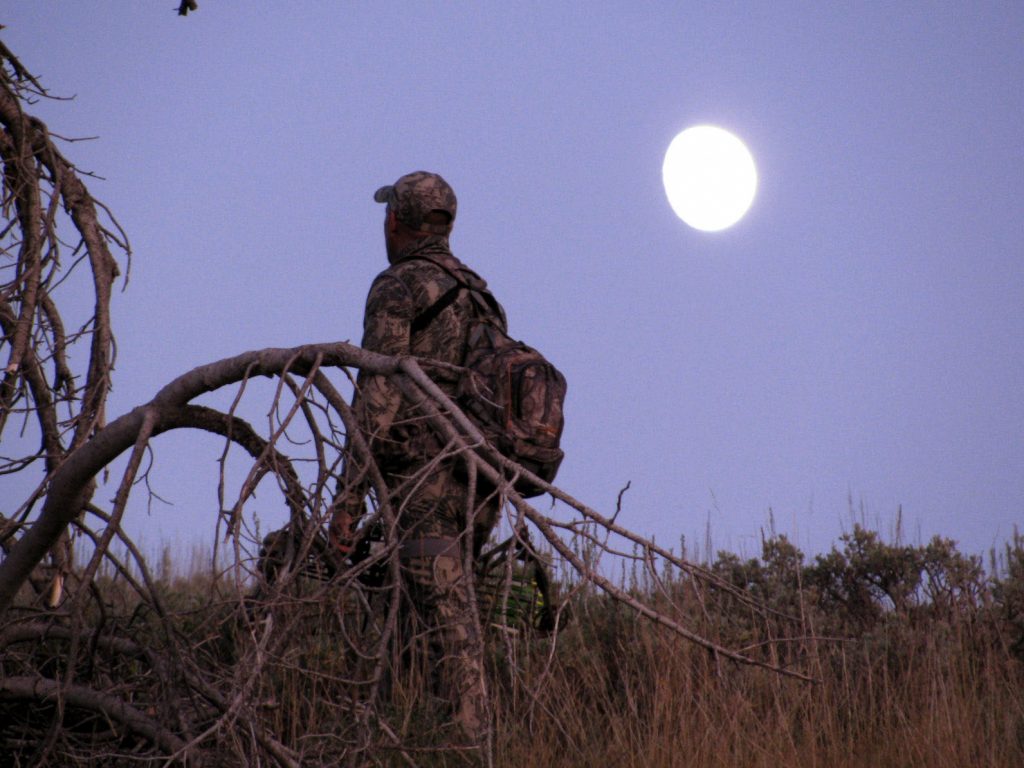
Leaving the variables and intricacies of unique areas out of the equation, I’m going to dive into some of the dominant patterns of elk behavior and hunting strategies throughout the fall months. This general guideline can be helpful if you know what weapon you want to hunt with, but are unsure which portion of that particular season to choose. Or, if you are trying to decide between the weapon methods and want a better understanding of elk behavior during each of the weapon’s seasons, this outline should be considered.
EARLY SEASON
Elk seasons in most states open in late August or early September. During early to mid-August, the more mature bulls leave their bachelor groups and begin rubbing the velvet off their antlers. Younger bulls might continue to hang out in small groups, and their velvet will be stripped off a week or two after the more mature bulls. In mountainous terrain, you will usually find the elk high up on the slopes — even well above the tree line in some areas. One advantage of hunting at this time of year is that you have a legitimate chance of finding a bull that is not herded up (with cows) and is often very patternable, giving you a chance to study his behavior and hunt accordingly. In hot climates, water is your friend and sitting over water during this part of the season can be very effective as well.
Leading up to early September, the bulls will be less vocal, but often visible, especially early in the mornings and before dark in the evenings. Glassing with quality optics from high vantage points can be productive for locating bulls and setting up an effective plan to stalk in closer. Because the elk are frequently in the higher elevations during this time, getting to them can be a physically demanding pursuit. Another challenge for hunting this part of the season can be the logistics of killing, processing, and packing-out an elk in what could likely be very warm weather.
PRE-RUT
By the first week of September, most of the bulls will have shed their velvet and will now be wearing a crown of “hard-horned” antlers. Their drive to breed begins to awaken, and the increased testosterone flowing through their bodies leads to aggression. During this transition phase of the Pre-Rut, the mature bulls aren’t yet herded up, but they are incredibly irritable in the presence of an intruding bull, and incredibly responsive to the prospect of a lonely cow.
Calling techniques play a big role in my hunting strategies during this time. Bulls will often respond to just about any call you throw at them – anything from a location bugle to a challenge bugle to a simple, seductive cow call. There is a magical window – usually somewhere during the second (or possibly third) week of September – when bulls aren’t tied down by their herds and are very responsive to calls. If you can get in close to one of these lone bulls, or get between a couple of bulls that are trying to establish dominance, you can be in for some heart-pounding, fast-paced action!
If you prefer calling and are able to be in the elk woods during this time, it is an unrivaled period of time for an elk hunter. Bulls are not only vocally responsive to calling, but they are also more likely to “charge” towards calls during this time than during any other. However, this window of elk hunting excitement usually lasts just a few days, and then the dynamics change yet again.
PEAK RUT
During the latter half of September and into the first week of October, dominant bulls will assemble, control, and protect their harem of cows. This phase of the Peak Rut corresponds with the cows coming into estrous and the bulls running themselves ragged trying to keep tabs on which cows are ready to be bred. Hunting can be both exciting and challenging during this time.
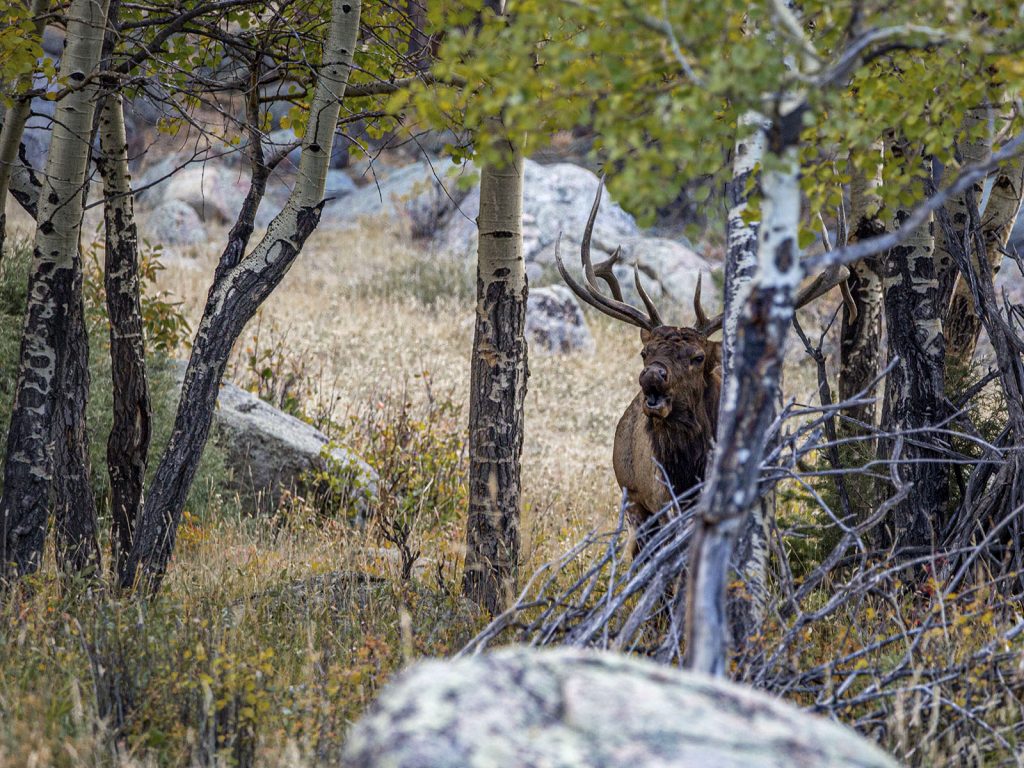
Bulls are extremely vocal during this time, but they don’t always actively come running to investigate or challenge the calls of other bulls. A herd bull will often ignore or try to avoid a confrontation with another bull if possible, and will often move his cows away from another bull. During this time, the phrase “bugle and run” is used frequently by frustrated elk hunters who just can’t quite pull the herd bulls away from the herds. However, if you can get in really close to the herd and be really aggressive or threatening with your calls, it can be enough to entice a big bull to come in to defend his ladies. Satellite bulls, on the other hand, will be hanging around the herd and can often be called in to investigate – especially if they think there is a lonely cow there that hasn’t been corralled by the herd bull.
I will go into a lot more detail on calling tactics during this period of the rut in later chapters, but what I want to stress here is that the bulls will be incredibly vocal, but it is not necessarily the best time to “call in” a herd bull. You can certainly kill elk during this time, and the action can be non-stop, but there are challenges in hunting herd bulls that are single-mindedly focused on containing and breeding their cows, especially if you are relying on using elk calls.
POST RUT
For the most part, this is the main event for the majority of hunters. Most general firearm seasons begin at the tail end of the rut or shortly thereafter – typically mid-October through the first part of November. In many states, you can still find a few vocal bulls, and depending on the pressure in those areas, it is still possible to call in elk. However, most of the larger herd bulls are done breeding by this phase of the rut and are not as responsive and not as likely to come in to calling.
Up until this point in the season, elk behavior is the leading factor dictating your hunting tactics. At this phase, however, there is a surge in the number of hunters in the elk woods, and their presence and pressure should also be considered as you adjust your hunting tactics.
The presence of hunters influences the elk in a big way. This can lead to a huge challenge or an incredible opportunity for you. For example, elk will recognize the overnight change in human presence, and will often seek cover in thick or obscure areas that offer a high level of security. Many hunters might be wondering where the elk went, but if you know the area well and can identify areas of security for the elk, you will know where to find them. Better yet, if you can understand how elk use topography and get on the “escape route” as they flee from hunting pressure, you might find yourself in a great position of having other hunters funnel the elk right towards you. Elk don’t simply vanish when they get pressured. The same numbers of elk are still out there, they are just harder to find.
LATE SEASON
Weather can be a factor in October, but by the time we get into November and beyond, you can usually count on weather becoming a factor in the way you hunt. The rut takes its toll on the elk, and by early November, their sole focus shifts to replenishing the needed nutrition they have expended during the past 2 months. In the late season, you will want to target food sources. Find the food, and you will find the elk.
Bulls are no longer interested in breeding, and they’ve usually broken away from the main herds. They may team up with a couple other bulls, or just keep to themselves, but their days are spent feeding and resting up, not often travelling too far from feed to bedding. They will remain in the higher country as long as they are able to find food, but will eventually move to lower elevations as winter snows pile up in the high country. With snow on the ground, tracking can be an effective way to find a bull and pursue them.
During this time, the cows will join into large herds and the need for ample food sources to sustain their numbers becomes a good place to search for elk. You will find large numbers of cows and young bulls hanging out in the lower country long before the bigger bulls start moving down.
Elk are often quite visible in the late season, and their behavior can often be patterned. The challenge you will often face is that this migration often takes the elk into lower country that is often characterized by private land. Access can become an issue for elk hunters planning a late-season hunt.
WHERE TO HUNT
With a general overview of the activities of elk throughout the fall, you should be starting to hone in on when you want to hunt. Now, it’s time to start considering where you want to hunt.
SELECTING A STATE
The most affordable and most convenient state to hunt elk is the state you live in. However, I am fully aware that many elk hunters do not reside where the elk do. And for those that do, many of you might be looking at expanding your elk hunting horizons and branching out to another elk state. Eventually, an out-of-state hunt will become a reality for the vast majority of elk hunters. When selecting a state to hunt elk in, the five most important factors you should consider are your budget, location, timeline, expectations, and preference.
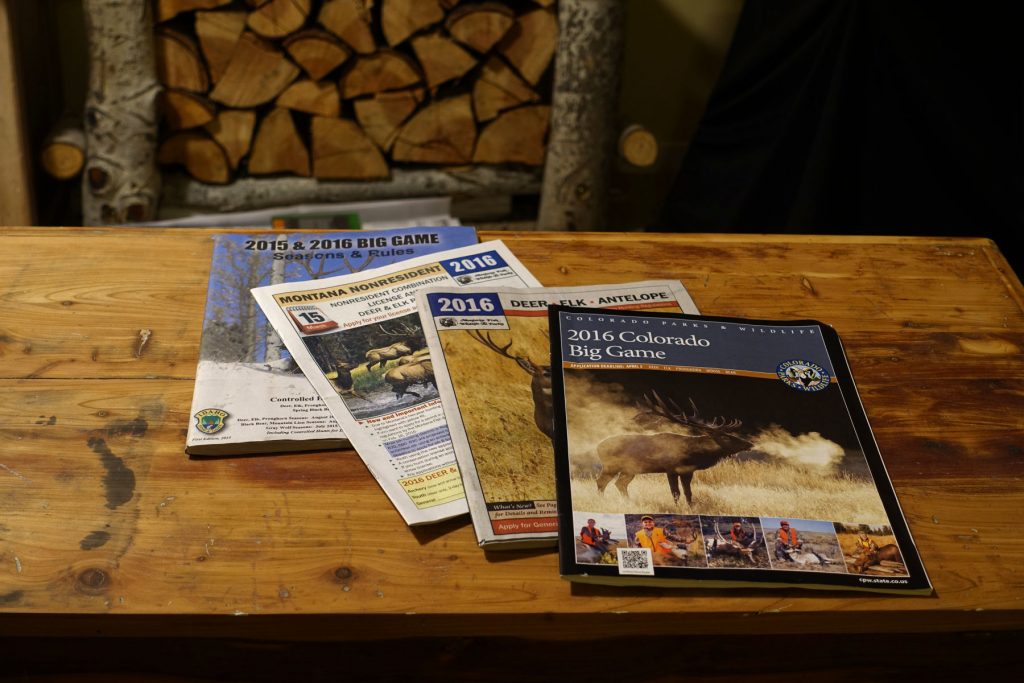
You now know what a tag is going to cost in each state, as well as the different price ranges for a fully guided hunt, a DIY hunt, and all the options in between. Those are the two biggest factors in any budget, followed by travel expenses. When considering what state to hunt, be sure that you look at more than the tag cost and revisit the travel logistics of getting there and back — potentially, and hopefully, with a few hundred pounds of meat and antlers.
In addition to the cost of traveling to an elk hunting state from your location, also consider the time you would save by hunting as close to home as possible. Less time in the seat traveling is more time on your feet hunting. If your hunting destination is as close to home as possible, the option of making a summer scouting trip becomes more feasible, and potentially adds a lot of value to your hunt. I will discuss scouting in great detail in the next Module.
The third factor to consider is your timeline. If you want to hunt elk as soon as possible – and you do not have the opportunity to do it in your home state – consider purchasing an OTC elk tag in states like Colorado, Oregon, and Idaho, or applying for an Elk License in states like Montana (really good odds) or Wyoming (decent odds). If you are still in the planning and preparing stages and anticipate waiting for a few years, you should consider putting in for bonus/preference points that will open up opportunities for potentially better quality hunts and additional states.
Next, you need to consider your expectations. Is your goal to kill a giant bull, or are you hoping to simply see as many elk as possible and will be happy with any legal elk? The differences in those two expectations can lead you in two completely different directions. Your expectations are intimately tied to budget and timeline. If you would consider it a success to simply see elk and have a chance of killing any legal elk, you can do that now (timeline) and you can do it relatively cheap (budget). If you expect some level of trophy quality, then you will need to be prepared to either spend a long time waiting to draw (timeline) or more money (budget) to make it happen.
Finally, consider your preference. What does your picture-perfect elk area look like? For me, I am more than content going into one of my favorite backcountry elk spots in September, knowing I’m not likely going to find many bulls over 300” – and being perfectly content shooting a representative bull in this area. But the overall experience and the sheer beauty of the country I am hunting draws me back there year after year. It is an area I can obtain a tag for on a regular basis, but the trophy potential isn’t all that high. However, trophy potential is part of my 10 year strategy, so I look for opportunity in amazing elk country for my regular hunts and look forward to hunting big bulls on a less frequent basis.
I have been fortunate to hunt 8 of the top 10 western states for elk (all western elk states except Nevada and Washington) to date, and I have been amazed at the diversity in elk habitat from one location to the next. If you compare states like Idaho, New Mexico, and Washington, you will find that each one has vastly different landscapes and elk habitat. You can also find major variations of landscape within each state. I have hunted the pinion juniper country of Arizona where elk habitually rely on man-made water holes (tanks) as their only source of water. Just a few hours to the south, I was lucky enough to draw another Arizona elk tag and hunt classic aspen/pine elk country at 10,000 feet! Your experience in elk country is much more than attaching a tag on an elk quarter, and all of these considerations can help you dial in where you want to begin.
SELECTING A UNIT
Deciding on a state to hunt is often easier than deciding on which unit you should hunt within a state. It doesn’t always take much time to start suffering from “analysis paralysis” once you start digging into the individual unit statistics. While there are often “famous” units within each state, the chances of drawing a tag in those areas is usually very low, so I tend to look for the jewel in the rough, or the hidden gem in each state.
Two of the criteria I mentioned in the section on selecting a state are also valid considerations for selecting a unit: timeline and expectations. If you begin with those two factors, it will help you narrow down the list of units you will want to consider. I mentioned it was possible to hunt elk in Colorado this year if you want to, but the guaranteed OTC tags are only available in certain units within the state. Timeline is a major factor in choosing your unit. If you want to expand beyond OTC tags and hunt a unit that offers a higher chance of trophy quality or more harvest opportunities, it might not happen this year. On the other hand, if you aren’t willing to accumulate preference points and/or wait several years to draw one of these tags, you know right away that some units are going to be out of the question for you.
CRUNCH THE NUMBERS
Many state Game and Fish agencies publish an incredible range of statistics for you to review. For the most part, the websites I listed earlier in this module contain much more than when you can hunt elk and how much it will cost. If you do a little digging, you can find data that is incredibly valuable in helping you compare one unit to another. Some key statistics that I consider as I’m researching new areas are estimated elk populations, overall hunter numbers in the unit (number of tags issued), harvest statistics (success rates, number of bulls killed, percentage of 6-points or average age of elk), and if it is a draw hunt, odds of drawing the tag.
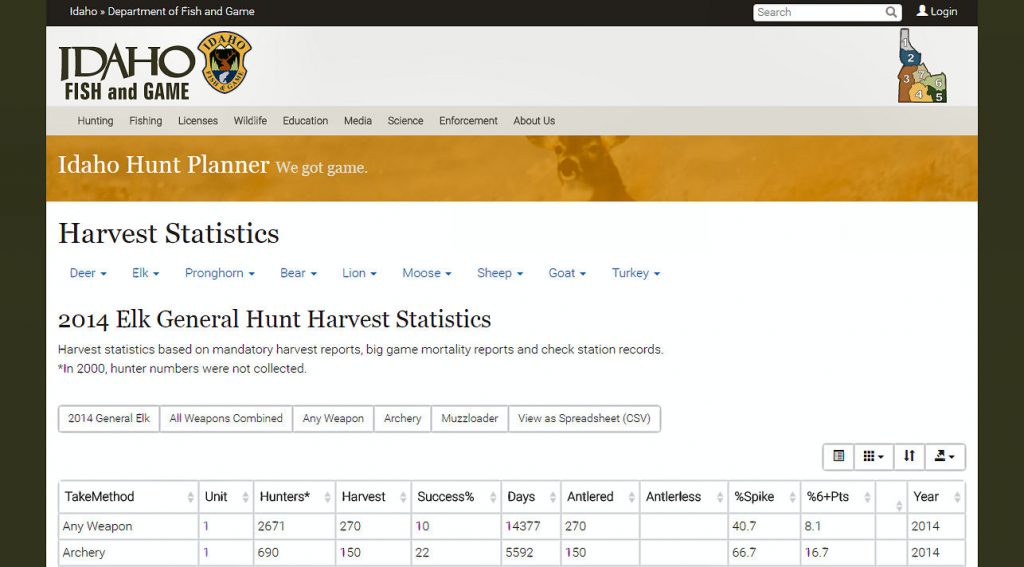
There is no magic formula with this data. There are no right or wrong numbers. The data does nothing more than give you an idea of the type of population that exists in the area, how much hunting pressure the unit receives, and how “huntable” the elk are in that area. Do you want to hunt in a unit with very little pressure? Are you willing to hunt lower densities of elk and accept lower odds of success in the hopes that you will get lucky on a monster bull that has been hiding out? Deciding what pieces of data are most important to you will come from your expectations and preferences.
ANALYZE THE ACCESS
Another very important factor in selecting a unit is to look at the land ownership that is most prevalent in that unit. Determining how much of the unit is public land versus private can make a huge difference in deciding whether to hunt there or not. Understanding any potential limitations within public lands (Forest Service, BLM, or state agencies) is also important. Federally designated Wilderness Areas can also be a factor to consider as some states have different restrictions and regulations there as well.
Aside from the private versus public access, there may be areas that are physically inaccessible to you based upon your abilities to get into remote country. You can see lots of roads on Google Earth, but that doesn’t mean they are all open during hunting season. How many trails (ATV or hiking) are there within the unit? If you’re hoping to get away from the crowds, you need to understand what kind of access the crowds are going to have as well.
Obviously, the more accessible areas are going to be more crowded, which can make them more difficult to hunt. However, you also need to be realistic with your abilities to reach, hunt, and pack an elk out of areas that are difficult to access and navigate.
STUDY THE TOPOGRAPHY
Finally, consider the predominant terrain of a unit. The type of terrain and topography is critical to understanding where elk will be during your hunt. If you are hunting during September’s archery season, for example, you might not want to hunt a unit that is predominantly low-lying foothills of a larger mountain range that dominates a neighboring unit. The elk may spend the late-season in those foothills, but they might not be there during archery season.
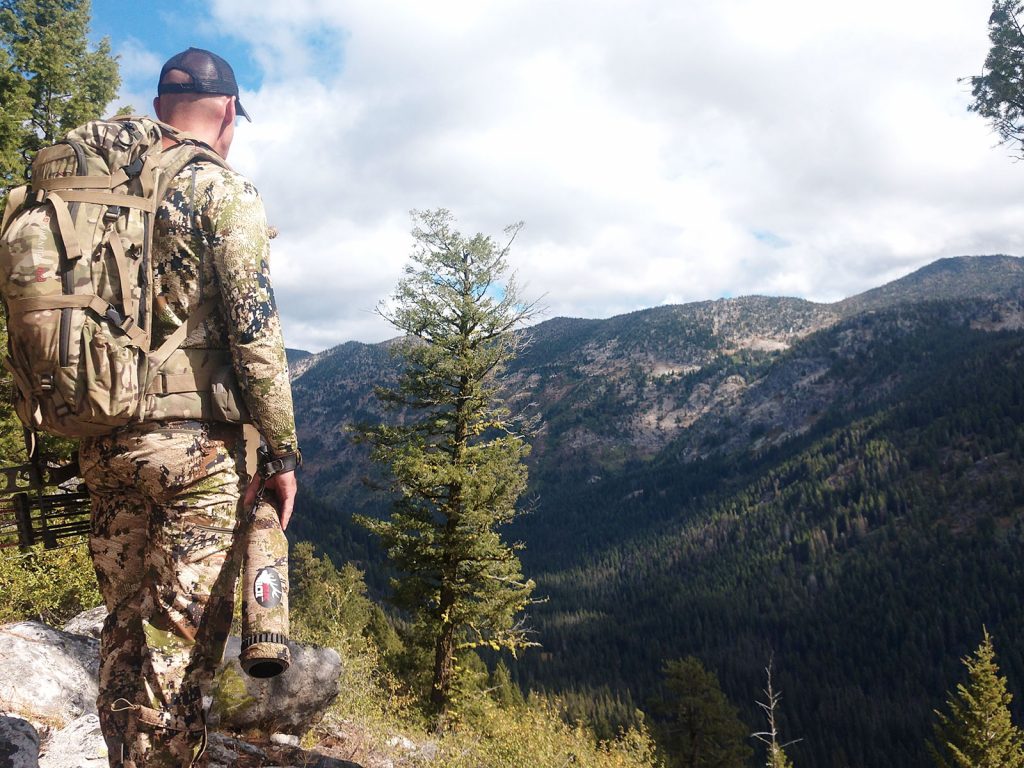
Another reason to consider the topography has very little to do with elk, but is related to my previous point of accessibility. The majority of terrain that elk call home is rugged and steep. If you’ve never laid eyes on it, Google Earth might give you more of a sense of security than you should have. We will talk a lot more about Physical Conditioning for Elk Hunting in an upcoming Module, but you do need to be very realistic about your experience, abilities, and understanding of living in – and hunting in – elk country.
Is high elevation or extreme remoteness going to be an issue for you? Are you able to stay for extended periods of time in the backcountry and not have concerns for getting lost? How are you planning to get your elk out of this area once you are successful? Don’t worry, I’m going to cover all of these topics and give you the resources to answer all of them confidently, but it is important to choose a unit that offers country that is huntable for you.
SELECT THE SPOT
Many hunters place a lot of emphasis on choosing the “right unit”, and that choice certainly does matter. However, I have hunted in a certain part of a unit for 7 days, only to relocate by 6 miles and find a completely different experience. Or, I have hunted a certain area within the unit during the first week of September, only to return two weeks later to find a drastically different scenario. When you are narrowing down where to hunt within a unit, there are a few key things I look for: food, water, and bedding areas for the elk that will correlate to the time of the season I plan to be there, and access.
If I can locate areas that hold the three essentials for elk (food, water, bedding/security), there is a good chance there will be elk nearby. The closer together those areas are, the better. If I can locate those features AND find them more than a mile off the road, I get excited.
In addition to finding these elk “hot spots”, I also look for areas that might get overlooked by the average hunter. Small tracts of public land that border private land are often overlooked as inaccessible. Or, areas along a main road where elk hunters drive right by heading to the “better” areas in the unit.
I’ll get into a lot more detail on what to look for and how to scout both from home and in the field in the next Module. I’ll discuss different tools you can use to identify these areas on maps, satellite imagery, and other resources. I will also dive deep into scouting areas for elk sign, understanding elk habitat, and much more. These topics will further help you identify “the spot” within a unit.
BACKUP PLANS
Before we jump ahead to the Scouting Module, I want to stress one very important factor. A few years ago, I spend countless hours scouting and setting trail cameras in a local unit that I had hunted for several years. I identified four different spots within the unit that I had found elk in previously, and spent multiple weekends hiking, scouting, and checking cameras. When elk season hit, I was over-confident in the opportunities we would have. Eight days later, and in the fourth area I had scouted, I finally connected on an elk. However, I came up goose-eggs in the first three areas. I had learned the hard way in years past not to get stuck in an unproductive area, so I pulled up camp 3 times before it all came together.
Having multiple backup areas to fall back on during the hunt is critical. There are so many factors that can effect an area overnight, that going on an elk hunt without a backup plan can be just as futile as going on an elk hunt with any plan at all.
Your alternate plan might be a nearby drainage, another trailhead, or another unit altogether if your tag allows for that. If you hunt Plan A and it doesn’t work out after a couple of days, don’t hesitate to pick up and move. I always have at least 3 areas to hunt, and it is not uncommon at all for me to spend time in all three of them before the hunt ends.
As a reminder, if you're considering an INSIDER membership from goHUNT, I can't stress to you enough how valuable of a resource it is for planning your elk hunt - both Draw hunts and OTC hunts.
SUMMARY
Going on an elk hunt can be overwhelming. Going on your first elk hunt, or your first elk hunt in a new state can be intimidating enough to make you just stay at home. However, with the proper tools and motivation, there is really no reason why you shouldn’t be hunting elk frequently.
In my travels across the West providing seminars and classes on elk hunting, I am always amazed by elk hunters who are waiting to draw their once-in-a-lifetime tag to go on their first hunt. I urge them – and you – to consider getting a tag and going hunting as many times as you can before drawing your long-awaited quality elk tag. That way, when you have the tag of a lifetime, you will be prepared, experienced, and confident, and be able to make the most of that hunt. Plus, once you go elk hunting one time, it will be in your blood and you will wish you had started years earlier!
With your Elk Hunting Plan now formulated, it’s time to Scout for Elk!
Click 'Next Module' Below to Continue to the Module 2: Scouting For Your Hunt




